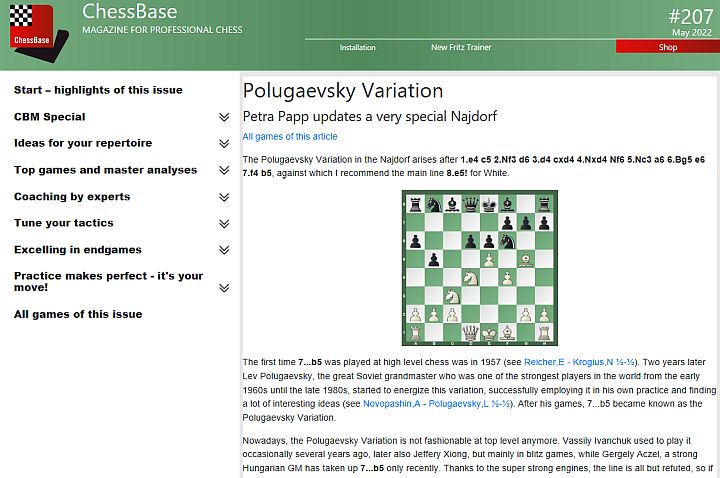


The Polugaevsky Variation in the Najdorf arises after 1.e4 c5 2.Nf3 d6 3.d4 cxd4 4.Nxd4 Nf6 5.Nc3 a6 6.Bg5 e6 7.f4 b5, against which I recommend the main line 8.e5! for White.
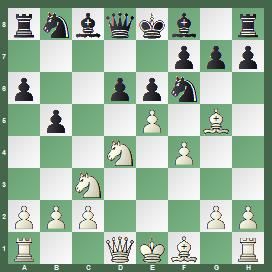
The first time 7...b5 was played at high level chess was in 1957. Two years later Lev Polugaevsky, the great Soviet grandmaster who was one of the strongest players in the world from the early 1960s until the late 1980s, started to energize this variation, successfully employing it in his own practice and finding a lot of interesting ideas (see Novopashin,A - Polugaevsky,L ½-½). After his games, 7...b5 became known as the Polugaevsky Variation.
Nowadays, the Polugaevsky Variation is not fashionable at top level anymore. Vassily Ivanchuk used to play it occasionally several years ago, later also Jeffery Xiong, but mainly in blitz games, while Gergely Aczel, a strong Hungarian GM has taken up 7...b5 only recently. Thanks to the super strong engines, the line is all but refuted, so if White is booked-up on theory, they will enjoy a great advantage. Still, it remains dangerous, because White must know the precise moves.
From the diagram follows 8...dxe5 9.fxe5 Qc7. A central idea of this line. Black's queen steps out of the pin, generating a tactical threat in order to win back the piece after the capture: 10.exf6 Qe5+ 11.Be2! Qxg5 12.0-0.
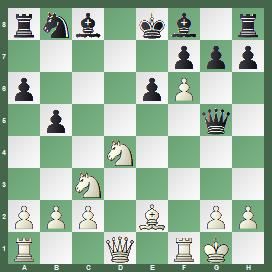
Up to this point, everything was forced. White has a better developed position, but converting this advantage is not easy. I will investigate Black's A) 12...Qe5?! and B) 12...Ra7.
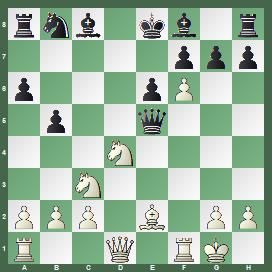
The second most popular move, but it's already a mistake. Black is trying to pressure the knight on d4 with the threat of Bc5. However, in some lines the black queen and king can get into the line of fire on the e-file. 13.Kh1! It's useful to remove the king from the weakened g1-a7 diagonal. 13...Bc5 14.fxg7! Qxg7 and now White has a nice attacking move: 15.Nf5!
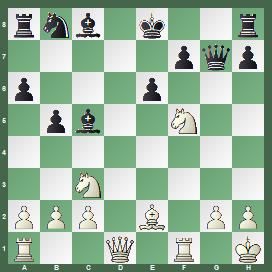
(intending 15...exf5 16.Qd5) with a great position, see Crosa Coll,M - Coelho,L 1-0.
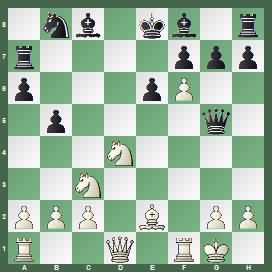
This wonderful move is the key idea in the Polugaevsky Variation. Black brings their rook into the game via the 7th rank, providing defence and quick counterplay. Of course, this move was discovered by none other than Lev Polugaevsky himself. 13.Qd3! The strongest reply. White has to control the e4 and e3 squares. Their next plan is to play Ne4 hitting Black's queen. 13...Rd7 14.Ne4!.
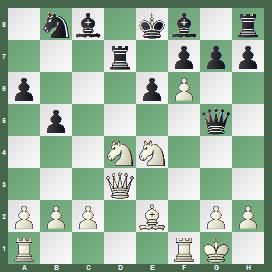
14...Qe5. This is the main move, Black puts pressure on both knights in the centre. (The rare 14...Qg6?! takes the queen far away from the queenside. 15.Bf3! White protects the knight on e4, making their queen mobile. 15...Bb7 and now after the piece sacrifice 16.Qc3!! Bxe4 17.Rae1!!
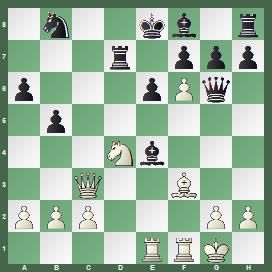
White won a creative attacking game in Szczepankiewicz,D - Gesicki,J 1-0).
15.Nf3!.

Retreating the knight to f3 gains a tempo. This is the critical position of the whole line. I will investigate the queen moves B1) 15...Qc7 and B2) 15...Qxb2.
B1) 15...Qc7 is pretty solid, but still it's easy for White to show a stable advantage: 16.Qe3! Qa7 17.Qxa7 Rxa7 18.Nfg5!.

Even after the queen trade White's play remains very active. 18...g6 19.c4! Using the hook b5 to opening up the queenside is a common idea, see Pasti,A - Aczel,G 1/2.
B2) 15...Qxb2. Capturing what is often considered a poisoned pawn. This should lead to a clear advantage for White as well, but the latter already has to know the dynamic attacking moves very well. 16.Qe3! Bb7 17.Rab1!.
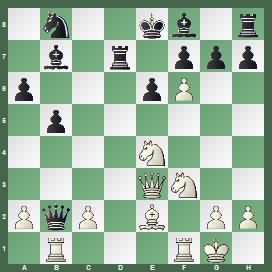
The queen on b2 is strong, so it's important to deflect it. This is another critical line of the Polugaevsky Variation, with a final branch:
B21) 17...Qxc2 18.Nfg5!!.

A very powerful multipurpose move. The knight protects its colleague on e4 and at the same time attacks Black's vulnerable kingside. Now 18...Qc7 is the most natural, but after 19.Rbc1 Qe5 20.Bg4!!
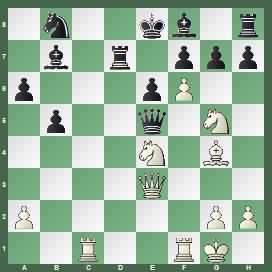
White has a lot of play.
And if Black blocks the kingside with 18...g6?, White can pry open the position with 19.Rbc1! Qa4 and now 20.Nxe6!!
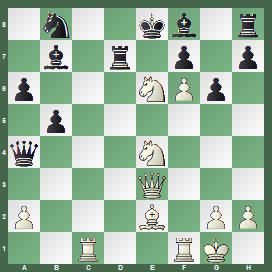
winning - all these lines are checked within the game Negi,P - Hermansson,E 1-0.
B22) 17...Qxa2
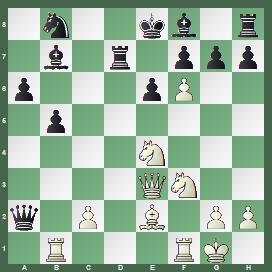
After this capture, I believe White has two equally good moves giving more than enough compensation for the sacrificed pawns: 18.Nfg5 and 18.Kh1. Both these continuations are thoroughly examined in the game Abdumalik,Z - Kamalidenova,M 1-0.
Summary: 6.Bg5 is one of the sharpest moves against the Najdorf. The Polugaevsky Variation 7...b5 is objectively not recommendable for Black, but leads to sharp and difficult lines which can result in a surprise. White must usually sacrifice material in order to attack the black king. I think the most solid way for Black is 15...Qc7 followed by 16...Qa7 to trade queens, though this allows White to open up the queenside with the standard pawn breaks c2-c4 or a2-a4. A typical attacking move for the first player is Nfg5!. From what I have analysed in this article, if White knows all these precise moves and ideas, they will have a much better position out of the opening! :)
You can find the complete article with all games and analyses in the new ChessBase Magazine #207!
Order now at the ChessBase Shop !
Single issue: 19,95€ or annual subscription (6 issues) 99,70€. The different subscription offers for ChessBase Magazine (incl. ChessBase USB stick for new subscribers) can be found on the CBM homepage!
***********************************************************************
The home page of ChessBase Magazine #207 welcomes you with the highlights of the issue! Just click, replay the annotated games or watch the videos and enjoy!
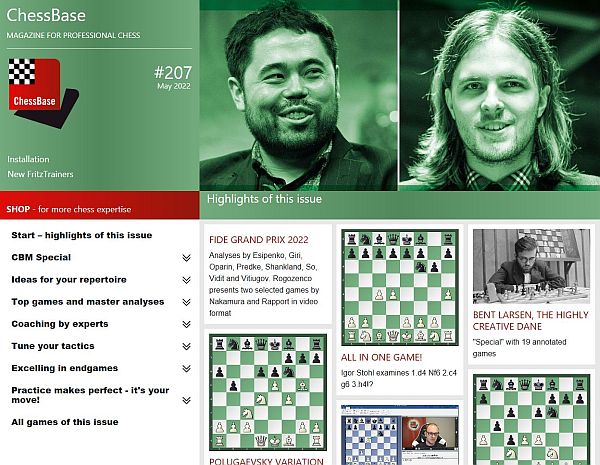
FIDE Grand Prix 2022: Analyses by Andrey Esipenko, Anish Giri, Vidit Gujrathi, Grigoriy Oparin, Alexandr Predke, Sam Shankland, Wesley So and Nikita Vitiugov. Dorian Rogozenco presents two selected games of the winners, Hikaru Nakamura and Richard Rapport, in video format. Or jump straight into the training and play through the game Aronian-Keymer from the Grand Prix "Move by Move" with Robert Ris! A complete repertoire against the Sicilian Alapin Variation? Markus Ragger presents his recommendations in his half-hour opening video. Don't miss it: The "Special" on Bent Larsen with 19 commented games as well as analyses + video on the strategic skills of the great Dane!
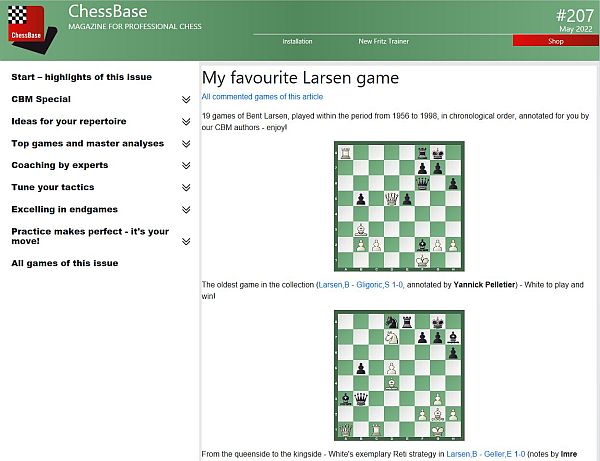
CBM authors analyse their favourite Bent Larsen games. An exclusive collection of 19 annotated games from 1956 to 1998 awaits you!
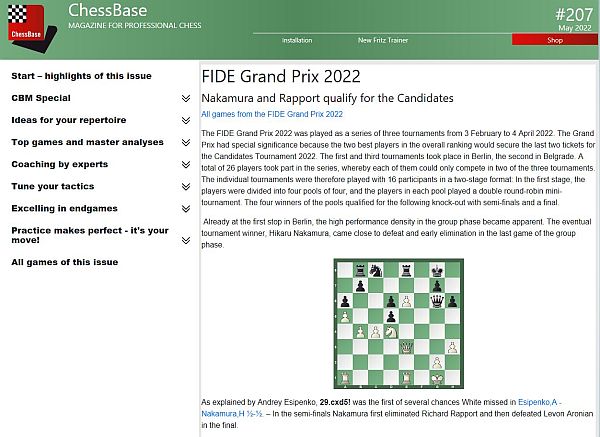
FIDE Grand Prix 2022: The Grand Prix was held as a series of three tournaments from 3 February to 4 April, the first and third of which were held in Berlin, the second in Belgrade. As overall winners Nakamura and Rapport qualified for the Candidates Tournament 2022. In this issue Andrey Esipenko, Anish Giri, Vidit Gujrathi, Grigoriy Oparin, Alexandr Predke, Wesley So, Sam Shankland and Nikita Vitiugov comment on their best games. And Dorian Rogozenco shows two games by Nakamura and Rapport in video format.
Airthings Masters 2022: Anish Giri comments on his short wins against Hans Niemann and Ding Liren
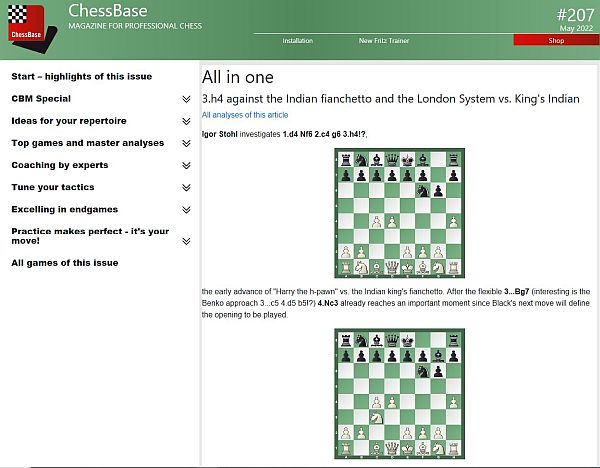
Everything you need to know about a specific line in one extensively annotated game - that is the concept of "All in one". Igor Stohl examines the early advance of the h-pawn against the Indian King's Fianchetto: 1.d4 Nf6 2.c4 g6 3.h4!? Bg7 4.Nc3. Tanmay Srinath tests the London System against King's Indian: 1.d4 Nf6 2.Bf4 g6 3.e3 Bg7 4.Nf3 0-0 5.Be2 d6 6.h3.
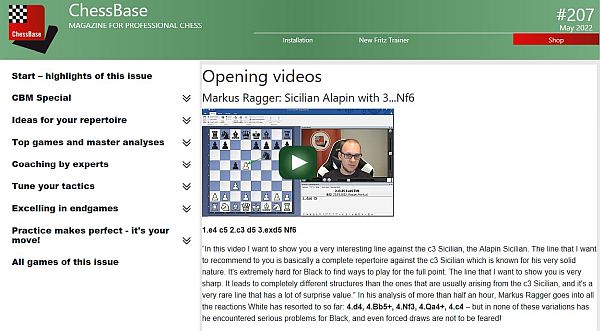
In the English Four Knights Game, the move 4.e4 is very popular. Rustam Kasimdzhanov examines the sometimes very sharp complications after 4...Bc5 and shows new ideas in his analysis, especially for Black. Markus Ragger presents a complete repertoire against the Alapin Variation with the side line 3...Nf6. And Mihail Marin shows an opening idea by Bent Larsen in the Sicilian Dragon Variation, which is still well playable today!
Rustam Kasimdzhanov: English Four Knights
1.c4 Sf6 2.Nc3 e5 3.Nf3 Nc6 4.e4 Bc5
Markus Ragger: Sicilian Alapin Variation
1.e4 c5 2.c3 d5 3.exd5 Nf6!?
Mihail Marin: Sicilian Dragon Variation
1.e4 c5 2.Nf3 d6 3.d4 cxd4 4.Nxd4 Nf6 5.Nc3 g6 6.Be3 Bg7 7.f3 Nc6 8.Qd2 0-0 9.Bc4 Qa5 10.0-0-0 Nxd4 11.Bxd4 Be6

CBM #207 offers many new ideas and concepts for your next games with 11 opening articles:
Yago Santiago: Benko Gambit 3.d5 b5 4.cxb5 a6 5.e3
Spyridon Kapnisis: Modern Benoni Fianchetto Variation
Andrey Sumets: Caro-Kann Advance Variation 3…Bf5 4.h4 Qc7
Martin Lorenzini: Sicilian Alapin 6.Na3/8.Nb5
Petra Papp: Najdorf Polugaevsky Variation 7.f4 b5 8.e5
Tanmay Srinath: French Tarrasch 3…Be7 (Part II)
Krisztian Szabo: Philidor Reversed 1.e4 e5 2.Nf3 Nc6 3.g3
Robert Ris: Ruy Lopez 3…Bc5 (Part II) 4.c3
Lars Schandorff: Slav 4...dxc4 5.e4 b5 6.Be2 e6 7.a4!?
Alexey Kuzmin: Anti Gruenfeld 1.d4 Nf6 2.Nf3 g6 3.Nbd2
Sergei Grigoriants: Gruenfeld with 4.g3 and 7.Na3 c5
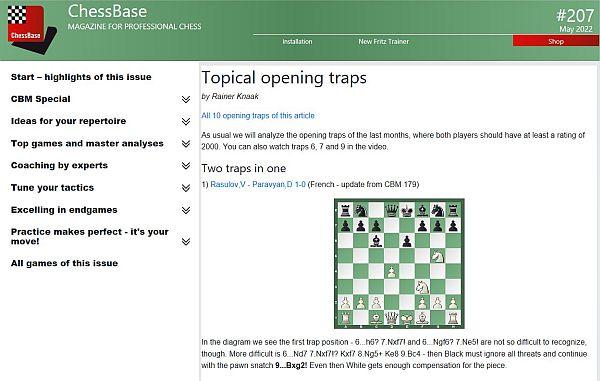
"Deceptive security and new insights" - Rainer Knaak takes a close look at 10 traps from current tournament practice three of which he also presents in video format.
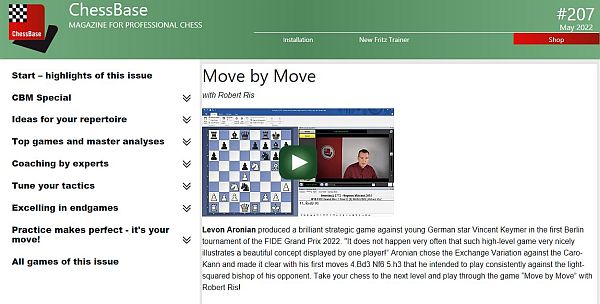
Test your chess move by move with Robert Ris! Levon Aronian's strategic brilliancy against Vincent Keymer from the first FIDE Grand Prix is on the programme. Can you find the moves of the super grandmaster?

Mihail Marin sheds light on the strategic skills of the most important Danish grandmaster of all time. Incl. detailed video introduction (playing time: 34 minutes).
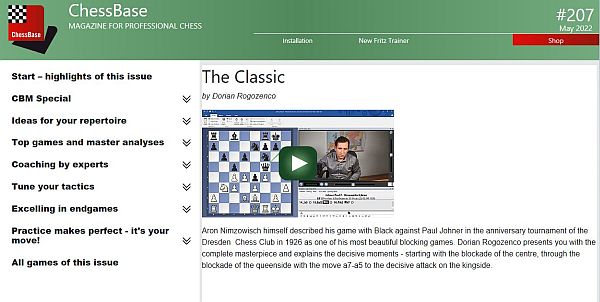
Aron Nimzowitsch described his game with the black pieces against Paul Johner at the anniversary tournament of the Dresden Chess Club in 1926 as "one of his most beautiful blockading games". Enjoy Dorian Rogozenco's presentation!
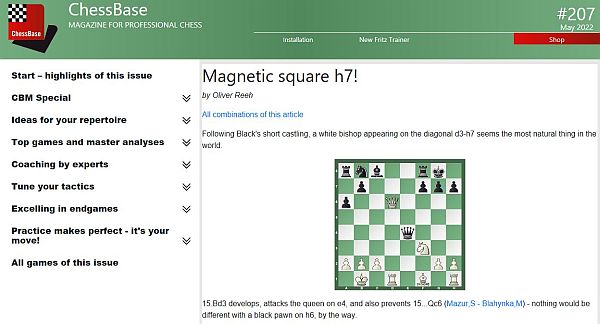
In Oliver Reeh's tactics contribution with 34 games, everything is about the attraction of the square h7 on the attacking white pieces. Incl. interactive video training!

Karsten Mueller provides comprehensive training material for the highest demands: the most beautiful endgames by Bent Larsen as well as highlights from the first Berlin Grand Prix 2022. The endgame expert from Hamburg opens both contributions with a detailed video introduction. In addition, he provides further analyses in "Readers write"
| Advertising |